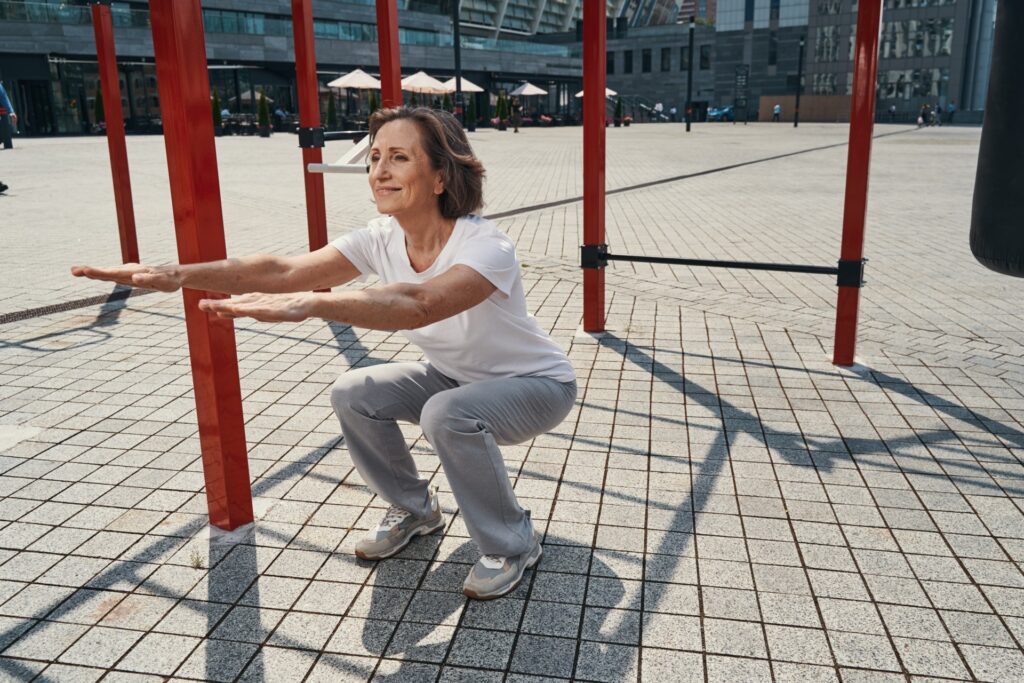Let’s be blunt here: there’s hardly a person around who shouldn’t be doing squats daily. This exercise gives multiple parts of the body a good workout. However, squats must be done properly to see the benefits. In addition, the correct form is needed to prevent injuries. How and why should you do squats routinely?
Why Add Squats to Your Workout Routine?
Adding squats into a regular workout routine provides immense benefits. The compound movement builds stronger legs, improves stability and balance, increases mobility and flexibility in your lower body, aids posture and spinal health, boosts fat burning and metabolism, and also releases important hormones for muscle and bone health.
Consistently incorporating various kinds of squats builds better functional strength for daily life activities as well. Raw Nutrition recommends the following steps when you do a squat.

Getting Into Position
- Stand with your feet slightly wider than shoulder-width apart. The shoes should point forward or slightly out. This position provides a stable base to perform the movement.
- Contract your core to stabilize your spine in proper alignment. Engage your abdominal muscles.
- Inhale as you raise your arms out straight in front of you for counterbalance. This shifts your center of gravity backward for balance as you descend.
Descending
- Initiate the movement by pushing your hips back and imagining that you are about to sit down in a chair behind you.
- As you descend, allow your knees to bend and track forward without extending past your toes.
- Keep your core braced to maintain a flat back. Do not round or arch.
- Push your weight predominantly through your heels rather than the balls of your feet.
- Keep your arms extended straight in front to act as a counterbalance as you drop down.
- Descend until your thighs are at least parallel to the floor. Do not squat past the point where your form begins breaking down.
Ascending
- Drive through your heels and extend at your knees and hips to return to the starting position. Contract your glutes at the top.
- Inhale as you descend, exhale as you push back up through the entire movement. Do not hold your breath.
- Keep your core engaged, chest lifted, and weight in your heels as you complete each rep.
Tips
When starting with squats, it is imperative to work on mastering proper form before increasing weight. Begin by performing bodyweight squats or using a very light barbell to allow yourself to focus purely on technique.
Progress slowly by adding minimal weight each session, only when you can descend and ascend through a controlled tempo, fully activating your leg muscles without compensation or imbalance. Doing so will help prevent injuries.
As you build foundational strength and confidence with the movement pattern, squat shoes or a flat-soled shoe can optimize the transfer of force from the floor into the working muscle. They provide a stable base for your heels to push through.
Refrain from bouncing rapidly out of the bottom of the squat and rely on your lower body muscles throughout the entire motion. Control each phase with intention as you descend and contract back upward.
Proper squatting requires core and lower body strength, balance, and proper spinal alignment. Master a safe, controlled range of motion through your hip and knee joints while keeping your weight pushed through your heels. Start light and focus on technique above all else.
Hey there! I’m a self-proclaimed Twitter addict and an unapologetic coffee lover.








